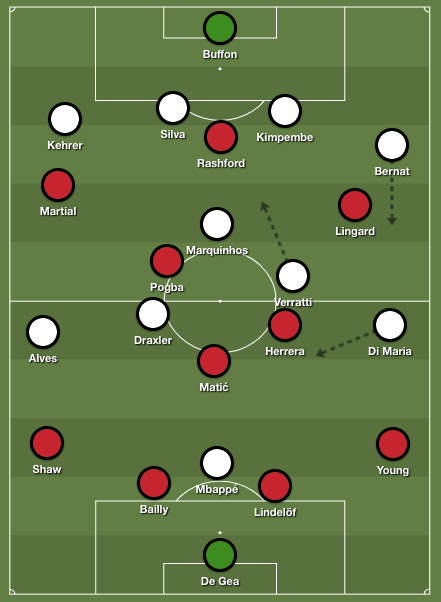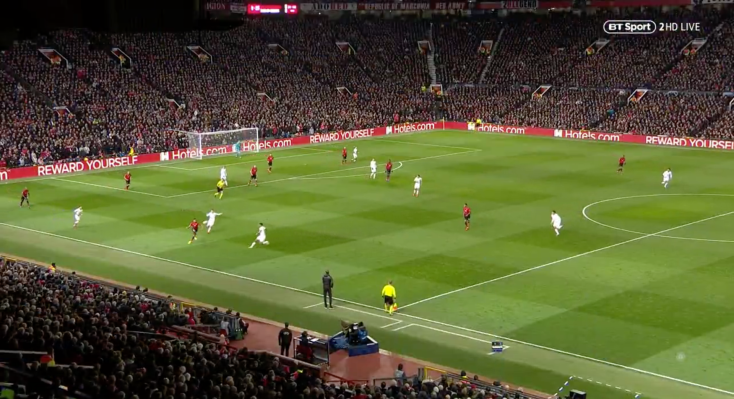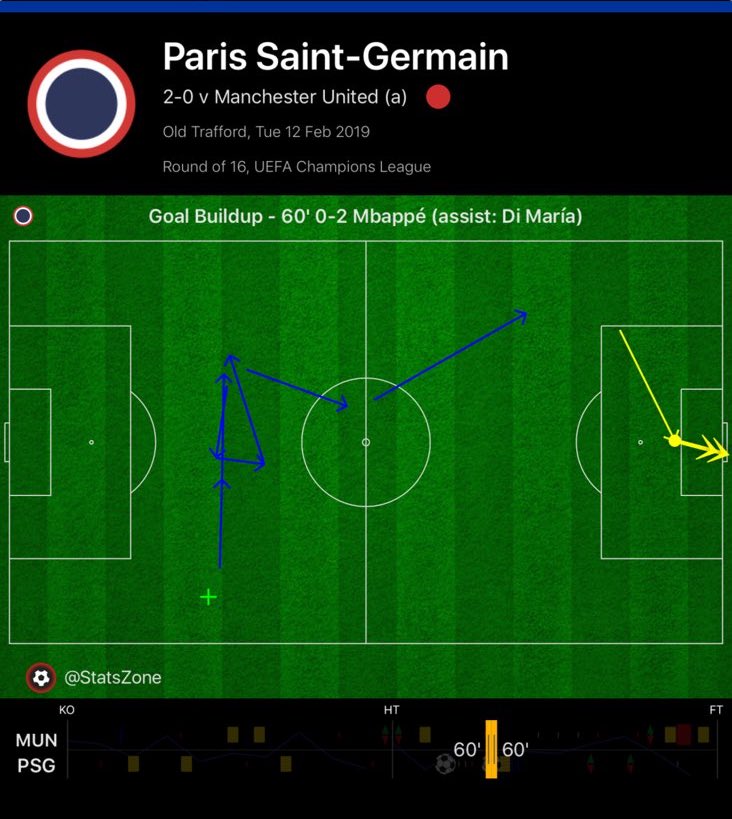Premier League Analytics Round Up – Week 4
The September international break typically provides the first real moment for reflection in the European season. While four weeks of football is much too soon to draw new conclusions with any certainty, it can plant the seeds for stories to watch out for as the season develops. Already there are interesting narratives developing. He’s a roundup of how the big six have started the season.
Top Two
We might only be four weeks into the season, but already the top of the table is shaping up like last year. Last season’s top two are the only sides in the Premier League to have won more than two matches and have already scored 12 and 14 goals each, while no other team has scored more than seven. Much like last term, while there is a clear top two results wise, there’s also a clear top one statistically.
While for most teams this early, it’s important to preach caution about making conclusions, but with Manchester City it’s a very safe bet that what they’ve shown so far will be the norm for the rest of the season. After week four the champions are currently ranked first for shots taken, shots on target, fewest shots faced, expected goals (xG) for, xG per shot, passes in the danger zone, fewest opposition passes in the danger zone and big chances created. Their xG differential of 6.95 without penalties is more than twice as good as any other team in the league already.
The only aspect resembling anything like an alarm bell for Pep Guardiola’s side is their defensive performance. In the first four weeks of the season, City haven’t quite been the defensive machine we’ve seen for the last two years. West Ham were able to create two big chances against them, while they also faced three against Bournemouth and one against Brighton. The fact that Fernandinho hasn’t played a minute in midfield yet is the one notable change in that respect. The Brazilian has been one of the best defensive midfielders in world football in recent seasons, and his dynamism has been key in preventing City from being vulnerable to counter attacks. While City bought Rodri for a lot of money, it’s still an unknown whether he can do a difficult job to such an excellent level. Only time will tell.
In the bigger picture however, a couple of slightly shakier than expected defensive performances is a minor concern. City have been the dominant league side in Europe’s top five leagues since Guardiola took over in 16/17, with xG differentials per match of 1.32, 1.76, 1.79 and now 1.93 over the last four seasons. To put that level of dominance into perspective, the only other Premier League side to have achieved an xG differential per match of over one in any season over the same period is Liverpool, who did it in both 17/18 (1.09), and 18/19 (1.32). Jurgen Klopp’s outfit did incredibly well to keep pace with City throughout last season, but the numbers have been unrelenting in showcasing City’s dominance. If the title race this season is as close as it was last year, it will be a relatively surprising outcome.
Liverpool’s start to the season hasn’t been quite as impressive as City’s, yet they’ve accumulated four wins nonetheless. In that respect 19/20 has begun just like 18/19. Klopp’s side have now won 35 of their last 43 league matches. That is a remarkable achievement in itself. They showed some defensive weaknesses against Norwich and Southampton, and currently have only the fifth best xG against, but they somewhat returned to their imperious shutdown best against Arsenal and Burnley. Like with City, we’ll have to wait and see whether the early numbers suggest Liverpool will be weaker at the back this season, or whether it was simply a quirk of the early season.
The race for the CL spots
While City’s statistical dominance is the least surprising aspect of the season so far, the most interesting story, analytically speaking, is probably their rivals, Manchester United. Their season so far has been one of pretty good performances and wild results, which has left the narrative all over the place. Some finishing luck at both ends against Chelsea turned a decent showing into a 4-0 rout, but since then luck has been against the Red Devils.
After four games United have the best xG against and the fourth best xG for. Their attacking numbers have been boosted by the three penalties they’ve won (of which only one has been scored). The number of penalties won and conceded tends to fluctuate a lot and doesn’t have a particularly good correlation from season to season, which is why they’re often omitted from xG numbers. United probably can’t count on getting regular penalties throughout the season, thus will need to improve their chance creation from open play. At the same time United were probably unlucky to only be awarded one penalty in their defeat to Crystal Palace, so it’s hard to make the case their attacking numbers are overly bloated by them.
While it’s very early, and the level of opposition attacking firepower they’ve faced hasn’t been particularly great, United’s xG against of 2.85 after four games is a hugely encouraging figure. United’s poor defence was the most surprising nature of Mourinho’s time at the club – although the problem was avoided for a season thanks to De Gea – and their biggest problem last season when they conceded 54 goals. United fans will be hoping that the early season numbers are already a result of the defensive reinforcements they made in the summer. Wan-Bissaka in particular has looked like everything people hoped of him, and is a huge upgrade defensively on any fullback they’ve used in recent years.
With United there is always a level of hysteria unmatched by arguably any club. A good run of results leads to punditry and think pieces claiming them to be back, while a few slip ups leads to huge crisis. On the basis of the first few weeks, United have been similar to what they were under Solskjær last season; which was the third or fourth best team in the league, and a clear improvement on the end of Mourinho’s tenure, but not an elite team either. Teams at that level will always have slip ups. It’s just that at the beginning of Solskjær’s reign, the slip ups never occurred; while since he took the job full time, they’ve occurred more often than not. Over the course of a full season, the outcome will probably be be somewhere in the middle.
Chelsea’s numbers so far under Lampard are fine without being particularly impressive. They rank third for shots for and fourth for shots faced. Their xG differential is better than Arsenal and Tottenham’s, but they have faced two newly promoted teams and haven’t played against either City or Liverpool like their London neighbours.
The most interesting aspect of Chelsea’s numbers so far is probably their poor second halves. In all four of their fixtures the Blues have got off to fast starts only to be dragged back. Overall their xG differential in four first halves this season is an impressive 1.42, but in second halves they’re currently at a deficit of 1.31. Fans are enjoying the pace and freedom the side is playing with in comparison to the Sarri season, but it might be coming at a physical cost.
For Arsenal and Tottenham, the weekend’s North London Derby would decide the stories accompanying both clubs in columns throughout country over the international break. Victory would signal a revival for one, and proof that they were on an upward trajectory after a strong summer; while defeat would see an early crisis for the other after back to back losses.
In the end it was entirely fitting that the two clubs played out a relatively even 2-2 draw. The two clubs are genuinely at similar places right now, and based off performances in the first four games of the season, neither team is deserving of the elation a derby win brings to carry them for two weeks.
By top six standards, both teams were decidedly mediocre last season, and were genuinely lucky to get as many points as they did. Given the 71 and 70 points they each got were not especially high tallies for clubs finishing fourth or fifth, it wasn’t a great showing. So far this season hasn’t seen much improvement. The north London rivals each have xG differentials in the negative going into the international break.
Both team’s numbers have drawn the brunt of having one of the toughest fixtures they’ll have all season in the first three weeks of the season, but neither have shown dominance in their other fixtures. Tottenham almost slipped up at home to Aston Villa, but got away with it; against Newcastle they didn’t. Arsenal beat Newcastle by scoring their one good chance, and then were outshot at home to Burnley, the team with the worst shot differential by far last season, in an unconvincing 2-1 win.
Both teams had clear squad deficiencies and the inconvenience of European fixture pile up as excuses last season. With good summer windows and no midweek fixtures yet, it’s borderline baffling why they haven’t been better so far. The generous way to look at is that with time the new signings will integrate more and have a significant impact on each team’s performances. It is of course very early. In the case of Spurs, Pochettino also hasn’t helped himself by not starting Eriksen or Vertonghen in the first three fixtures. At the same time all of Ndombele, Ceballos and Pépé have produced some strong individual performances, without it seeming to have much of an impact on the team overall.
Given only two of the big six are elite level teams, and the Premier League has a strong middle class right now made up by the likes of Wolves, Everton and Leicester, it probably won’t take dominant performances by any of the chasing pack to make top four. But in the cases of Arsenal and Spurs, something better than what they shown will still be needed.
All stats found on whoscored.com and understat.com










